Welcome to week 3 of the American Tapestry Alliance “Tapestry Unlimited Blog Tour”.
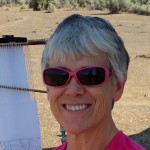
I am Terry Olson. I have been weaving tapestry for about 25 years and teach at the Damascus Fiber Arts School in Oregon. Audrey Moore taught me to weave and I learned most of my tapestry-specific skills from attending workshops with Archie Brennan and Susan Martin Maffei.
I hope that many of you will join the American Tapestry Alliance and weave something for Tapestry Unlimited: 11th International Unjuried Small Format exhibition that will hang in the Milwaukee Public Library in Wisconsin, July 26 to August 11, 2016. The variety of skills and ideas presented will be a wonder and inspiration to behold.
My post will be about using slits to create vertical lines. I will start with a bit of background information.
In tapestry, when two colors are side by side, they are either joined with a weft lock or not. Two colors of weft joined in a weft lock give a slightly jagged appearance.
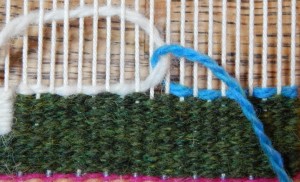
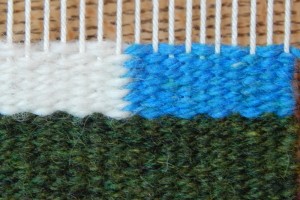
Not using a join creates a slit. One pass each of two colors side by side forms a teensy little hole, but several passes stacked on top of each other form a slit. (Pass: weaving back and forth one time.) A slit results in the appearance of a smooth vertical line.
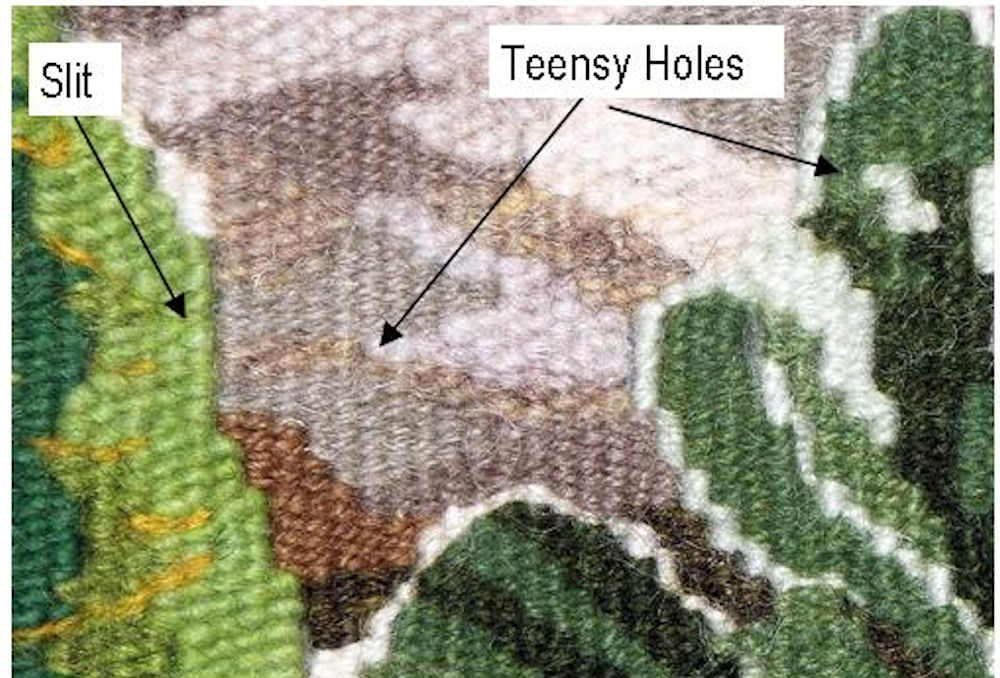
Anatolian kilims are also known as slit weavings because they are commonly made with the slit technique, although the slits are mostly less than one-half inch high. These slits are not usually sewn up.
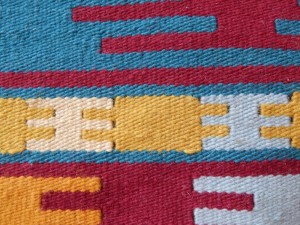
In many tapestries the slits are sewn shut as they are woven, or afterward when the tapestry is taken off the loom. If the tapestry is woven sideways and turned 90 degrees when hung, it is very important to sew the slits shut so that they do not droop over time and create holes.
Brennan and Maffei wrote a brief article describing three methods of sewing slits both on their website and in the educational page of the American Tapestry Alliance website-slits. Mastering the techniques of sewing slits as you weave is worth the time they take to learn.
Now, onto our current lesson, using slits as vertical lines.
Use the shadow created by the slit between two colors to create drama and dimensionality.
In this tapestry, Sunburn, artist Ruth Manning uses the slight shadow created by the vertical slit. She uses it in the neck to help pull it out from the background, which has similar value. She uses it to help differentiate one pant leg from the other, even though they are not exactly the same white. It even helps put the straps of the green shirt on top of the girl’s skin.
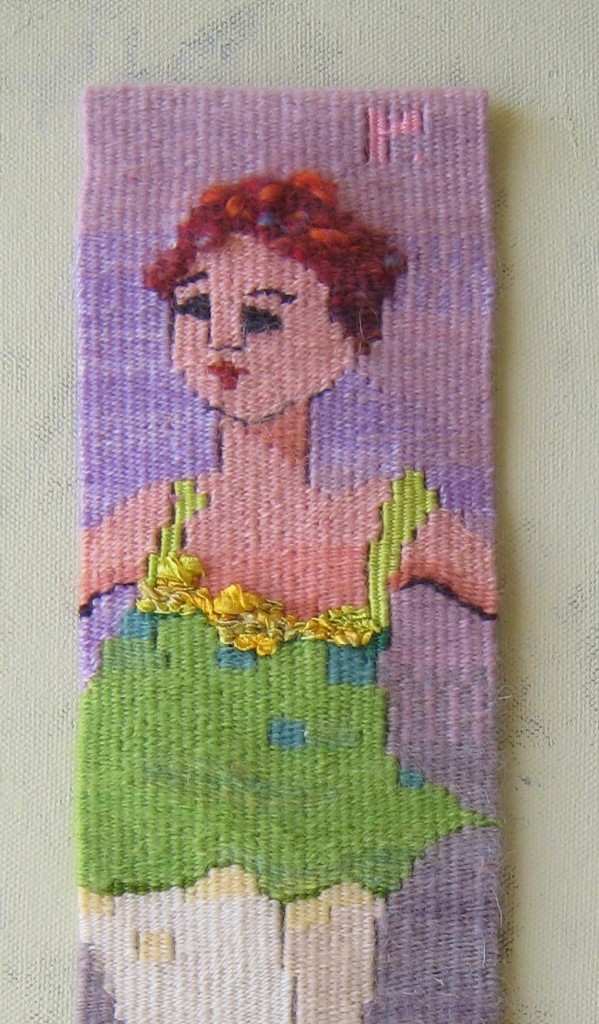
The shadow created by the slit can also be used between two areas of the same color yarn. Sometimes a weaver will use a single warp wrapped with a contrasting color to outline or to separate two areas woven in the same color, but it is often difficult, or too bold, and can be structurally unsound. A double weft lock can be used to structurally integrate a single warp outline, but that is a separate subject.
To create a separation or the illusion of an outline, the vertical slit can be used. I use it in the tapestry The Milk Maid and the Boss to create separate fingers in the milk maid’s hand.
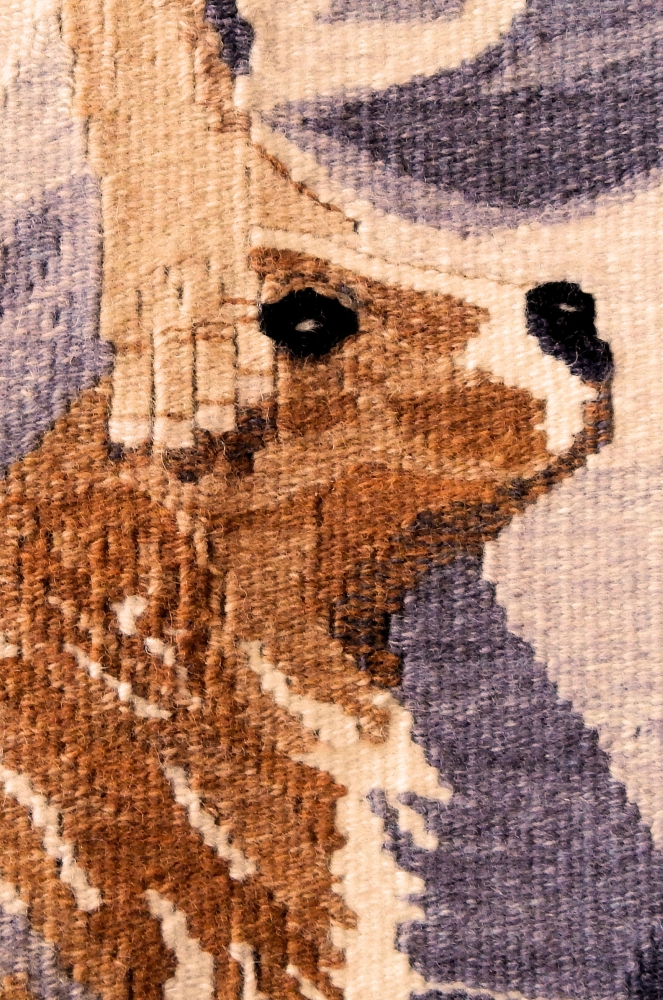
This technique is also used to great effect in the tapestry, Scenario Unknown, by Cecilia Blomberg, to separate the planks in the stage floor from one another. She uses it both between areas of the same color and between areas of similar color.
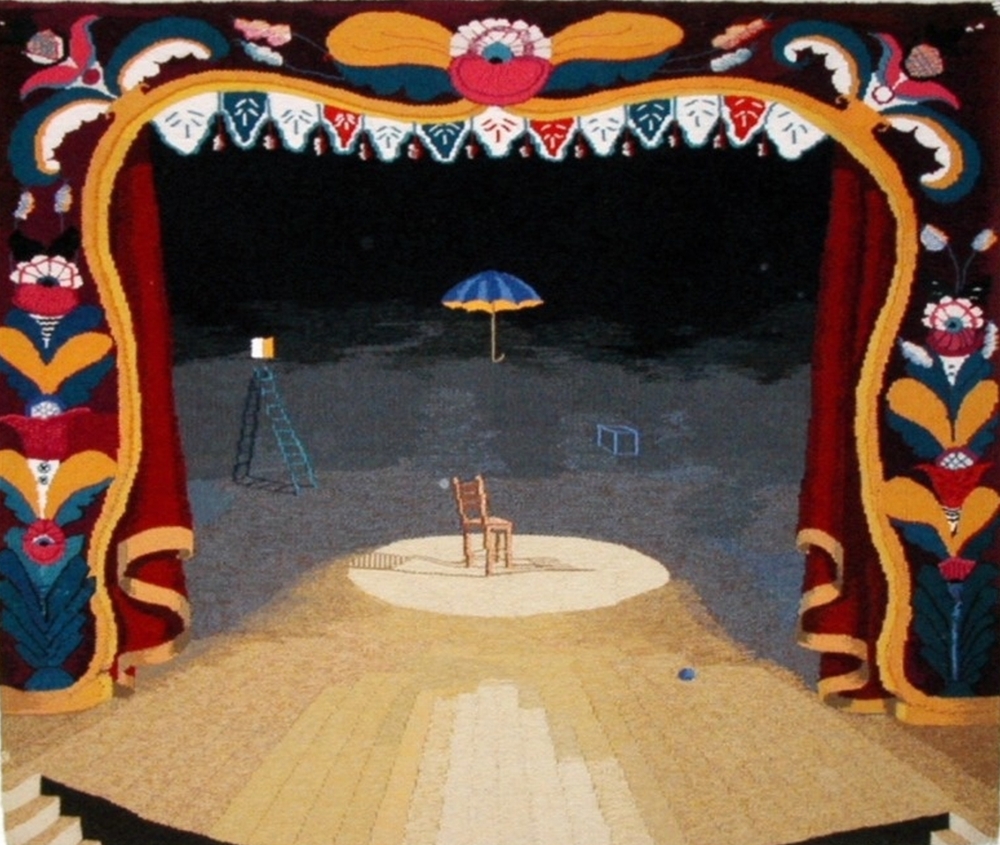
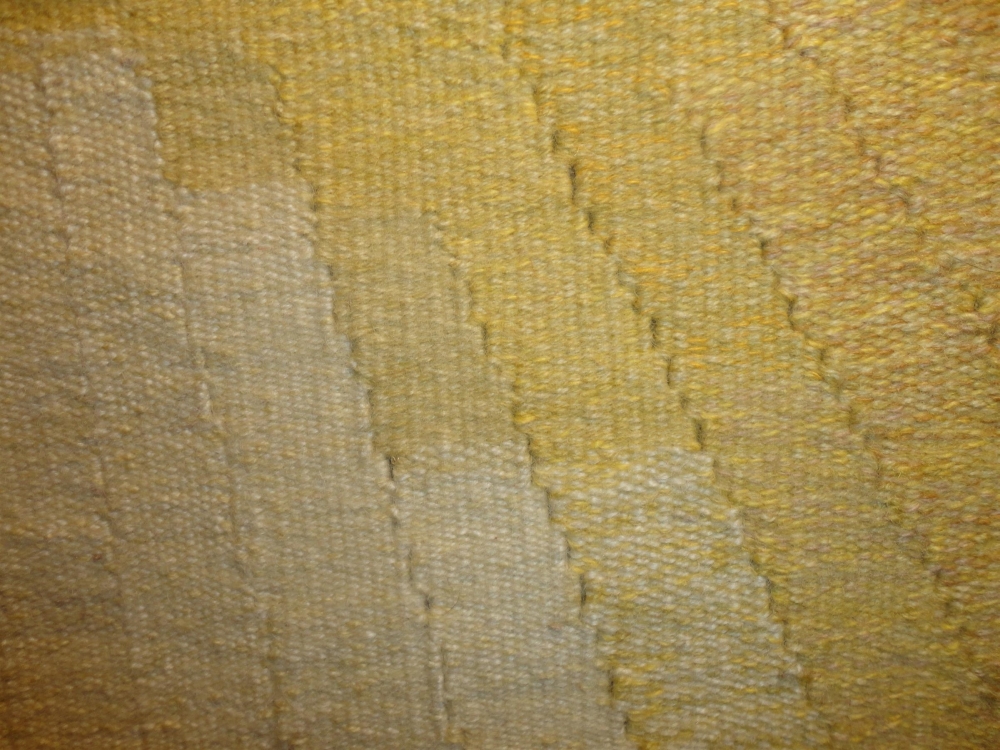
She and her partners in Pacific Rim Tapestries also used this technique to separate the planks in the bottom of a rowboat in this tapestry woven for a Children’s Hospital in Tacoma, WA.

Just a few more details and this blog will end. Keep in mind that when you create a slit, or any turn, there is twice as much yarn at that point than between any other two warps, so pull each color tight enough to keep loops from forming at the turn. If you want to accentuate or exaggerate the slit, you can pull even more and separate the warps a bit. Be careful doing that as you are pulling your warps out of alignment!
Some weavers choose to sew the slits afterward, from the back, instead of using the sew-as-you-go methods described in the article by Brennan and Maffei. If you choose to do this, just try even harder than usual to maintain a correct warp spacing throughout your weaving. This can be challenging.
Slits are not always the answer. Look for good examples of outlining in Archie Brennan’s gallery.
As for the prizes, every week you have a chance to enter to win one of two prizes. The first is a one-year membership to the American Tapestry Alliance. The second is a one-year membership to ATA AND a free entry to the exhibition this blog tour is all about, Tapestry Unlimited: 11th International Unjuried Small Format.
Current ATA members are not eligible to win.
Details on how to enter the Unjuried Small Format exhibition can be found on the American Tapestry Alliance website, along with the entry page. Everyone who signs up to participate by January 31, 2016 will be included in the exhibition. Your tapestry needs to be photographed and mailed before the end of March 2016. The entry fee for the exhibition is $40US and includes an exhibition catalog and return postage.
If you aren’t too tired, you might check out some of the other blogs on my website, where I show examples of the different group challenges woven by the members and students of the Damascus Fiber Arts School for the past five iterations of the Unjuried Small Format Show sponsored by ATA.
Please check in to the rest of the Tapestry Unlimited Blog Tour.
December 23rd: Vancouver Yarn
December 30th: Rebecca Mezoff
January 6th: Terry Olson
January 13th: Mirrix Looms
January 20th: Elizabeth Buckley
January 27th: Sarah Swett
Thanks and keep weaving! Terry